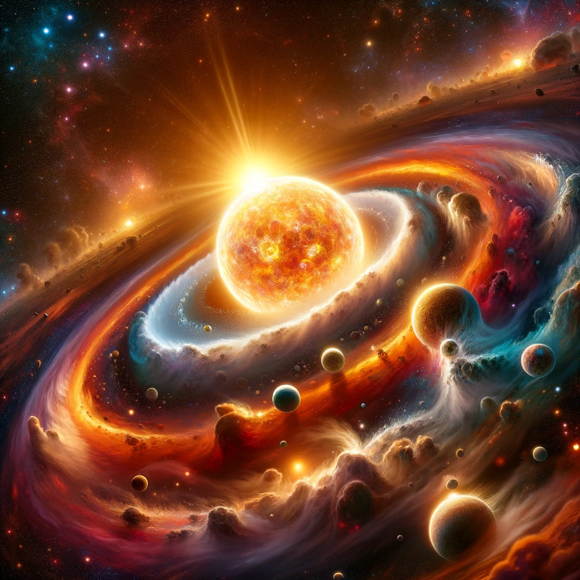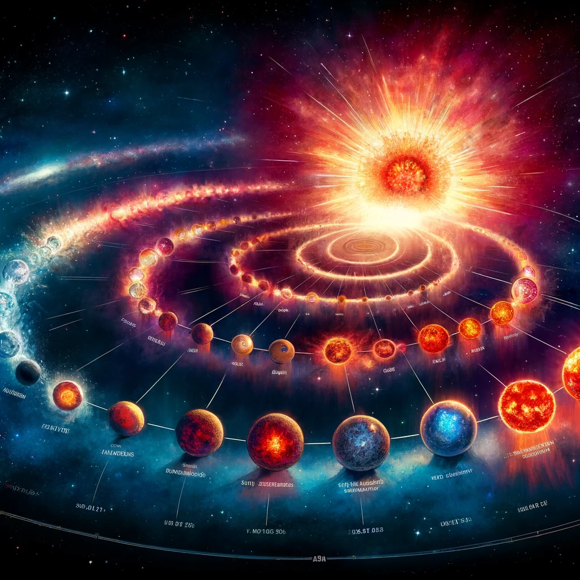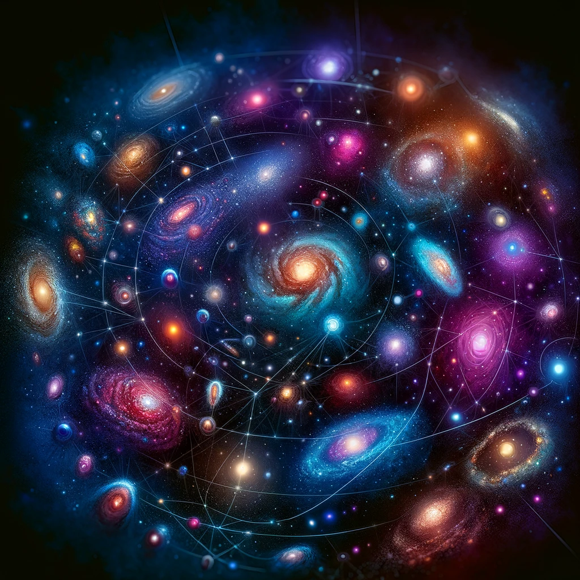Imagine a universe teeming with celestial wonders – swirling galaxies, glittering stars, and amongst them, planetary systems, like waltzing partners locked in a cosmic dance. These marvels ignite our curiosity, whispering secrets about their origins and transformations. Join us on a quest to unravel the fascinating theories that explain how planetary systems form and evolve, a journey through the very fabric of the cosmos.
Our story begins with the Nebular Hypothesis, a cornerstone of our understanding. Imagine a vast cloud of gas and dust, a nebula, swirling in the darkness. This 18th-century concept, championed by Kant and Laplace, proposes that these nebulae collapse under their own gravity, birthing a spinning disk. Within this cosmic dance floor, dust clumps together, forming celestial building blocks called planetesimals. Over eons, these planetesimals collide and merge, evolving into protoplanets, the embryonic forms of our familiar planets. This elegant theory not only explains planetary birth but also sheds light on the orbital patterns and compositions of our Solar System.
However, the cosmic choreography is more intricate than initially thought. Powerful winds blast out from young stars, sculpting the protoplanetary disk and influencing planetary formation. Additionally, recent discoveries reveal a phenomenon called planetary migration, where planets waltz across the cosmic dance floor, their orbits shifting dramatically over time. This movement can be triggered by interactions with neighboring planets, gravitational resonances, or even leftover material from the protoplanetary disk. By incorporating these dynamic elements, we’re refining our understanding of how planetary systems evolve over vast stretches of time.
The discovery of exoplanets – planets orbiting distant stars – has been a game-changer. From scorching hot Jupiters to frigid super-Earths, these newfound worlds showcase a mind-boggling diversity in size, composition, and orbits. They challenge our preconceptions and offer a glimpse into the vast spectrum of planetary systems out there.
This discovery has also ignited new questions. How do a star’s unique characteristics influence its planetary companions? What role do factors like the amount of metals in a star, orbital dynamics, and planetary migration play in shaping these systems? By exploring these questions, astronomers are deciphering the universal laws that govern the birth and evolution of planets across the cosmos.
As we delve deeper into space, studying distant stars and their planetary companions, we transform from mere observers into cosmic detectives, piecing together the grand narrative of celestial evolution. Theories on planetary formation and evolution provide a window into the intricate dance of matter and energy that shaped our celestial neighborhood and continues to shape countless worlds beyond.
From the swirling dust of nebulae to the dynamic interactions within exoplanetary systems, each discovery adds another captivating thread to the rich tapestry of cosmic history. As we continue to explore and unravel the mysteries of the universe, may our curiosity remain boundless, and may the stars forever ignite wonder and awe in generations to come.





